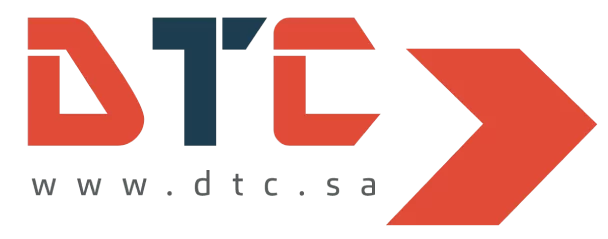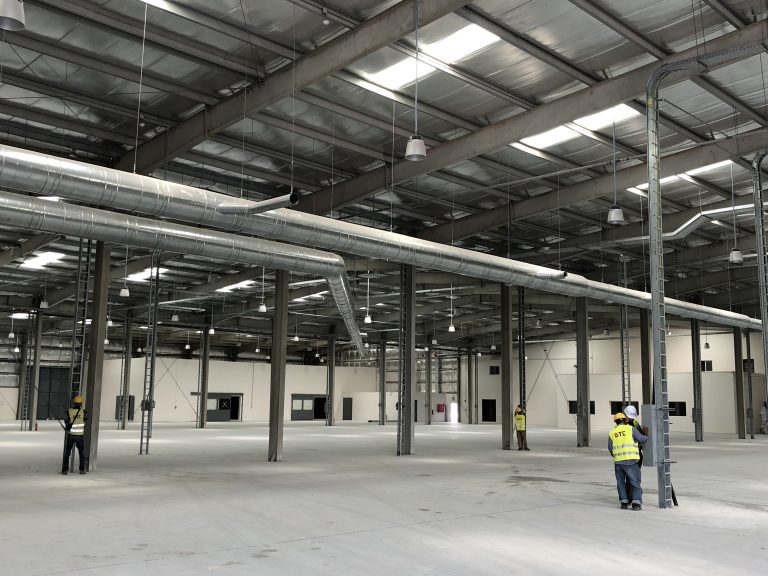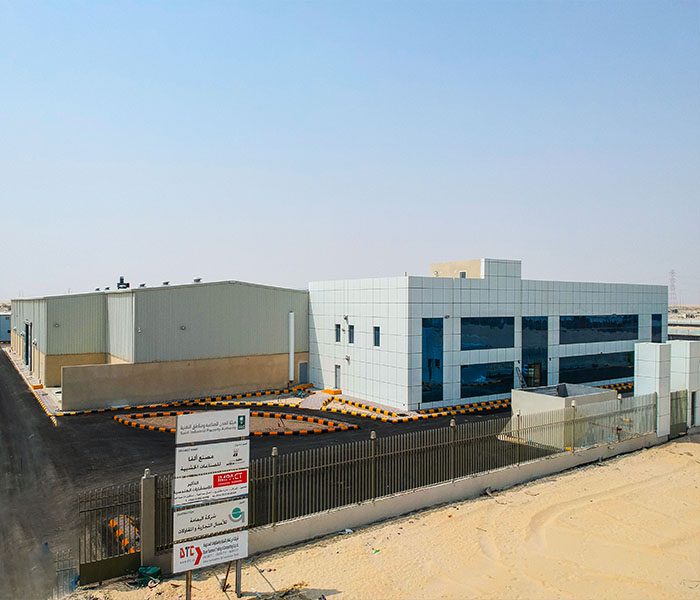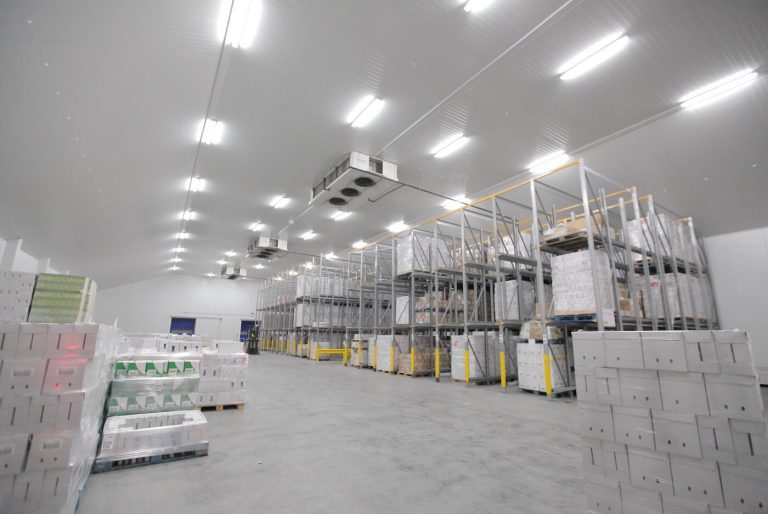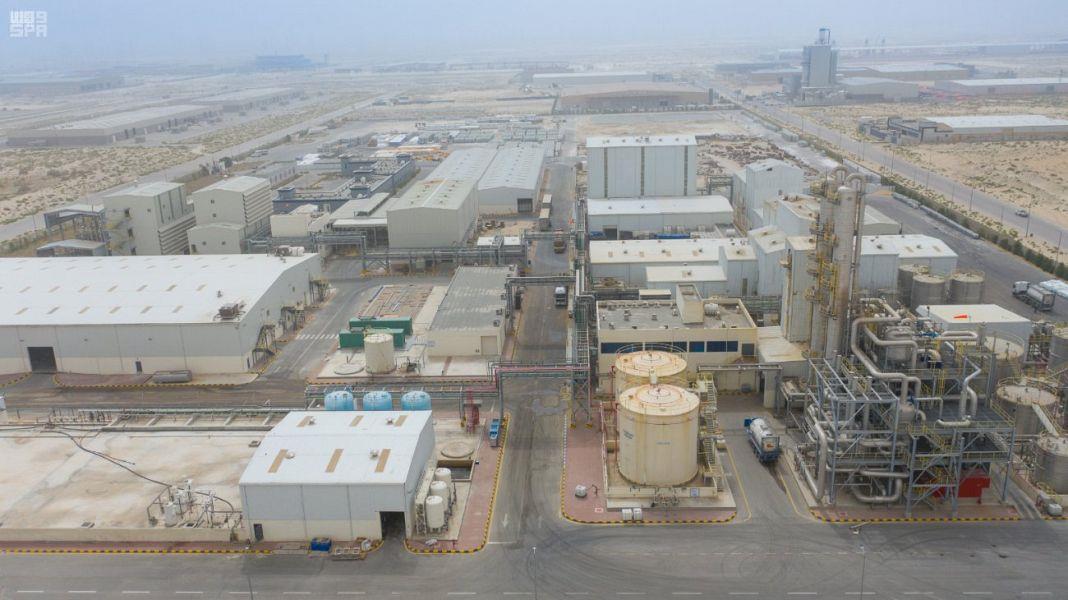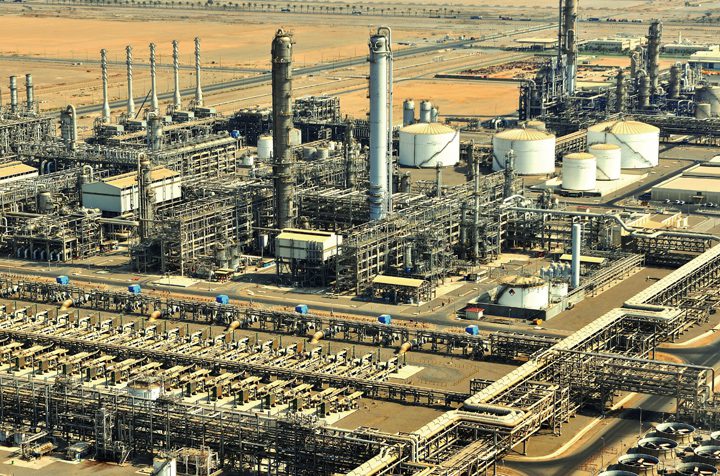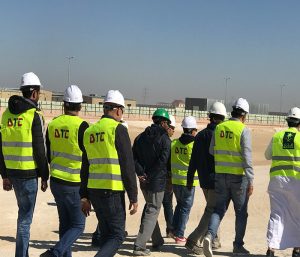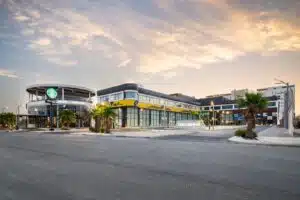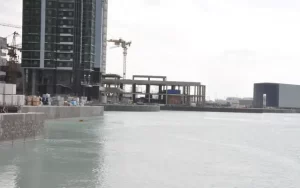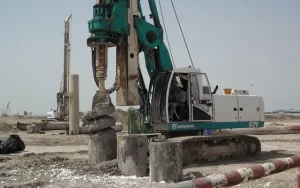The Ultimate Guide to MEP Contracting in KSA
Book Chapters:
Understanding the Basics of MEP Contracting in KSA
Regulatory Framework for MEP Contracting in KSA
Types of MEP Contracts in KSA
Key MEP Contracting Stakeholders in KSA
Preparing for MEP Contracting in KSA
MEP Contracting Bidding Process in KSA
Negotiating MEP Contracts in KSA
Contract Execution and Management in KSA
Payment Procedures for MEP Contracts in KSA
Dispute Resolution in MEP Contracts in KSA
Claims and Variations in MEP Contracts in KSA
MEP Contracting Risk Management in KSA
Quality Control and Assurance in MEP Contracting in KSA
Future Trends in MEP Contracting in KSA
Case Studies in MEP Contracting in KSA
Book Introduction:
EP (Mechanical, Electrical, and Plumbing) contracting is a crucial part of the construction industry in KSA (Kingdom of Saudi Arabia). It encompasses the design, installation, and maintenance of essential systems that ensure the safety, comfort, and efficiency of buildings.
The importance of MEP contracting in KSA cannot be overstated. With the rapid growth of the construction industry in the country, there is an increasing demand for MEP contractors who can provide high-quality services that meet the regulatory and environmental standards.
However, MEP contracting in KSA can be challenging due to the complex regulatory framework, cultural differences, and the unique business environment. This book aims to provide a comprehensive guide to MEP contracting in KSA, covering all aspects of the process, from understanding the basics to managing risks and resolving disputes.
The book is divided into 15 chapters, each focusing on a specific topic related to MEP contracting in KSA. Chapter 1 provides an overview of the basics of MEP contracting, while Chapter 2 discusses the regulatory framework for MEP contracting in KSA. Chapters 3 to 5 delve into the types of MEP contracts, key stakeholders, and the preparation process.
Chapters 6 to 8 cover the bidding process, negotiation, and contract execution and management, respectively. Chapter 9 discusses payment procedures for MEP contracts in KSA, while Chapter 10 explores dispute resolution. Chapters 11 and 12 focus on claims and variations and risk management, respectively.
Chapter 13 covers quality control and assurance in MEP contracting in KSA, while Chapter 14 looks into future trends in the industry. Finally, Chapter 15 presents case studies that demonstrate real-world applications of the concepts discussed in the book.
Whether you are a newcomer to MEP contracting in KSA or an experienced professional looking to expand your knowledge, this book is an invaluable resource that will help you navigate the complex landscape of MEP contracting in KSA.
Chapter 1: Understanding the Basics of MEP Contracting in KSA
MEP contracting involves the design, installation, and maintenance of mechanical, electrical, and plumbing systems in buildings. These systems are essential for the safety, comfort, and efficiency of buildings, and they must be designed and installed in compliance with regulatory and environmental standards.
MEP systems include a wide range of components, such as HVAC (Heating, Ventilation, and Air Conditioning) systems, electrical wiring and distribution systems, fire protection systems, plumbing and drainage systems, and building automation systems.
MEP contracting in KSA is a complex process that involves multiple stakeholders, including MEP contractors, clients, architects, consultants, and regulatory authorities. The process typically begins with the client’s requirements, followed by the design and construction stages, and finally, the maintenance and operation stages.
MEP contractors are responsible for providing high-quality services that meet the client’s requirements and comply
with regulatory and environmental standards. They are involved in all stages of the MEP contracting process, from the initial design to the final commissioning and handover of the systems.
One of the challenges of MEP contracting in KSA is the complex regulatory framework. The country has several regulatory bodies responsible for overseeing the construction industry, including the Saudi Arabian Standards, Metrology, and Quality Organization (SASO), the Saudi Arabian General Investment Authority (SAGIA), and the Ministry of Municipal and Rural Affairs (MOMRA).
These regulatory bodies set standards and guidelines for MEP contracting in KSA, which contractors must comply with to ensure the safety and quality of the MEP systems. For example, SASO has established the Saudi Building Code (SBC) which sets the minimum standards for building design, construction, and maintenance, including MEP systems.
Another challenge of MEP contracting in KSA is the unique business environment. The country has a different culture and business practices compared to other countries, which can be difficult for foreign companies to navigate.
Therefore, it is crucial for MEP contractors in KSA to have a good understanding of the local business culture and customs. This includes building relationships with local stakeholders, understanding local laws and regulations, and having a strong network of suppliers and subcontractors.
In conclusion, understanding the basics of MEP contracting in KSA is essential for anyone involved in the construction industry in the country. It is a complex process that requires a thorough understanding of the regulatory framework, business environment, and technical aspects of MEP systems.
The next chapters of this book will provide a more detailed overview of the different aspects of MEP contracting in KSA, including the regulatory framework, types of contracts, key stakeholders, bidding process, negotiation, contract execution and management, payment procedures, dispute resolution, claims and variations, risk management, quality control and assurance, and future trends in the industry.
Chapter 1: Regulatory Framework for MEP Contracting in KSA
The regulatory framework for MEP contracting in KSA is complex, and contractors must comply with several standards and guidelines to ensure the safety and quality of MEP systems. The following are some of the key regulations that contractors must be aware of:
Saudi Building Code (SBC): The SBC sets the minimum standards for building design, construction, and maintenance, including MEP systems. It covers a wide range of topics, such as fire protection, structural design, electrical systems, and plumbing.
Electrical Wiring Regulations (EWR): The EWR is a set of guidelines for the installation, maintenance, and operation of electrical systems in buildings. It covers topics such as wiring methods, grounding, protective devices, and testing and inspection.
Saudi Mechanical Code (SMC): The SMC sets the standards for the design, installation, and maintenance of mechanical systems, including HVAC, plumbing, and fire protection systems.
Saudi Energy Efficiency Center (SEEC): The SEEC is responsible for promoting energy efficiency in buildings and establishing guidelines and regulations for energy-efficient design and construction.
In addition to these regulations, MEP contractors in KSA must comply with the requirements of the local municipalities and authorities. For example, contractors must obtain permits and approvals from the relevant authorities before starting any construction work.
Complying with these regulations can be a daunting task for contractors, especially for those who are not familiar with the local regulatory environment. Therefore, it is crucial for contractors to have a good understanding of the regulations and to work closely with local consultants and experts who can provide guidance and support.
Chapter 2: Types of Contracts in MEP Contracting in KSA
MEP contracts in KSA can take different forms, depending on the scope and complexity of the project. The following are some of the common types of contracts used in MEP contracting:
Lump Sum Contract: In a lump sum contract, the contractor agrees to perform the work for a fixed price. The contract specifies the scope of work, the project schedule, and the payment terms.
Cost Plus Contract: In a cost-plus contract, the contractor is reimbursed for the actual cost of the work, plus a fee for overhead and profit. This type of contract is often used for projects with a high degree of uncertainty or complexity.
Design-Build Contract: In a design-build contract, the contractor is responsible for both the design and construction of the project. This type of contract can help to streamline the project delivery process and reduce the risk of disputes between the designer and the contractor.
Turnkey Contract: In a turnkey contract, the contractor is responsible for the entire project, from design to construction and commissioning. The owner only needs to provide the project specifications and requirements, and the contractor takes care of the rest.
Each type of contract has its advantages and disadvantages, and the choice of contract type depends on the project requirements, risk profile, and the preferences of the parties involved.
In the next chapter, we will discuss the key stakeholders in MEP contracting in KSA, including the owner, consultant, contractor, and suppliers/subcontractors.
Chapter 3: Key Stakeholders in MEP Contracting in KSA
MEP contracting in KSA involves several key stakeholders who play different roles in the project delivery process. The following are some of the main stakeholders:
Owner: The owner is the entity that initiates the project and has ultimate responsibility for its success. The owner defines the project scope, requirements, and budget, and selects the consultant and contractor. The owner also manages the project risks and ensures that the project is delivered on time, within budget, and to the required quality standards.
Consultant: The consultant is responsible for designing the MEP systems and ensuring that they meet the owner’s requirements and local regulations. The consultant prepares the technical specifications, drawings, and cost estimates, and provides support during the construction phase to ensure that the design is properly implemented.
Contractor: The contractor is responsible for constructing and installing the MEP systems in accordance with the project specifications and regulations. The contractor manages the construction process, including procurement, logistics, site management, and quality control. The contractor also provides post-construction support and maintenance services.
Suppliers/Subcontractors: Suppliers and subcontractors provide the materials, equipment, and labor necessary for the construction and installation of the MEP systems. They work under the direction of the contractor and are responsible for delivering their scope of work on time, within budget, and to the required quality standards.
Other stakeholders in MEP contracting in KSA may include the local authorities, such as the municipality, civil defense, and energy efficiency center, as well as third-party inspectors and testing agencies.
Effective communication and collaboration among these stakeholders are essential for the success of the project. Therefore, it is important for each stakeholder to understand their roles and responsibilities and work together to achieve the project objectives.
In the next chapter, we will discuss the key factors that influence the selection of MEP systems in KSA, including the climate, building use, and energy efficiency requirements.
Chapter 4: Factors Influencing the Selection of MEP Systems in KSA
MEP systems play a critical role in ensuring the comfort, safety, and functionality of buildings in KSA. However, the selection of the appropriate MEP systems depends on several factors that vary depending on the specific building use, location, and energy efficiency requirements. In this chapter, we will discuss some of the key factors that influence the selection of MEP systems in KSA.
Climate: KSA has a hot and arid climate, with temperatures reaching up to 50°C during the summer months. Therefore, air conditioning systems are essential for maintaining a comfortable indoor environment. The selection of air conditioning systems depends on the building size, type, and occupancy, as well as the local climate conditions. Other climate-related factors that influence MEP system selection include the need for proper ventilation and humidity control.
Building use: The type of building and its intended use also play a significant role in determining the appropriate MEP systems. For example, a hospital may require specialized HVAC systems to maintain clean air and minimize the spread of airborne diseases, while a data center may require high-performance cooling systems to prevent equipment overheating.
Energy efficiency requirements: The increasing demand for energy efficiency and sustainability has led to the adoption of green building standards in KSA, such as Estidama and LEED. The selection of MEP systems should consider energy efficiency standards and target levels, such as the minimum energy performance requirements for HVAC systems in the Saudi Energy Efficiency Center (SEEC) guidelines.
Local regulations: MEP systems must comply with local regulations and codes, such as the Saudi Building Code (SBC) and the National Fire Protection Association (NFPA) standards. These regulations cover several aspects of MEP systems, including design, installation, maintenance, and safety requirements.
Lifecycle cost: The lifecycle cost of MEP systems should also be considered when selecting the appropriate systems. The lifecycle cost includes the initial capital cost, maintenance cost, energy cost, and replacement cost over the life of the building. The selection of energy-efficient MEP systems may lead to lower operating costs and reduced environmental impact over the building’s life.
In conclusion, the selection of MEP systems in KSA depends on several factors, including the climate, building use, energy efficiency requirements, local regulations, and lifecycle cost. Therefore, it is important to carefully evaluate these factors when selecting the appropriate MEP systems for a building project. In the next chapter, we will discuss the key challenges and opportunities facing MEP contracting in KSA.
Chapter 5: Challenges and Opportunities in MEP Contracting in KSA
MEP contracting in KSA faces several challenges and opportunities. In this chapter, we will discuss some of the key challenges and opportunities facing MEP contractors in KSA.
Challenges:
Limited skilled labor: The availability of skilled labor is a significant challenge for MEP contractors in KSA. The industry requires highly skilled and trained workers, but there is a shortage of qualified candidates.
Language barriers: Many expatriate workers in the MEP industry do not speak Arabic, which can create communication barriers on job sites.
Project delays: MEP systems are critical components of a building, and their installation requires coordination with other trades. Delays in other trades can cause project delays and affect the MEP contractor’s ability to meet deadlines.
Safety concerns: MEP systems involve working with electricity, gas, and other potentially hazardous materials, which pose safety risks to workers. Contractors must comply with strict safety regulations and invest in safety training and equipment.
Quality control: MEP systems are complex and require careful installation and testing to ensure proper function. Contractors must implement rigorous quality control measures to minimize defects and ensure compliance with local regulations and codes.
Opportunities:
Growing construction industry: The construction industry in KSA is growing rapidly, with significant investment in infrastructure, commercial, and residential projects. This growth creates opportunities for MEP contractors to expand their businesses and increase their market share.
Government initiatives: The KSA government has launched several initiatives to promote energy efficiency and sustainability in buildings, such as the Saudi Energy Efficiency Center (SEEC). These initiatives create opportunities for MEP contractors to provide energy-efficient systems and services.
Technology advancements: Technology advancements in MEP systems, such as building automation and energy management systems, offer opportunities for MEP contractors to provide innovative solutions to clients.
Training and development: MEP contractors can invest in training and development programs to improve the skills and knowledge of their workers. This investment can improve productivity, quality, and safety and help attract and retain skilled workers.
Collaboration with other trades: MEP systems are integral to a building’s function and require coordination with other trades, such as architecture, structural engineering, and electrical engineering. Collaborating with other trades can help ensure timely completion of projects and minimize delays.
In conclusion, MEP contracting in KSA faces several challenges and opportunities. The industry requires highly skilled workers, compliance with strict regulations, and a focus on quality and safety. However, the growing construction industry, government initiatives, technology advancements, training and development, and collaboration with other trades offer opportunities for MEP contractors to expand their businesses and provide innovative solutions to clients. In the next chapter, we will discuss the key strategies for successful MEP contracting in KSA.
Chapter 6: Strategies for Successful MEP Contracting in KSA
MEP contracting in KSA is a complex and challenging industry. To succeed, contractors must implement effective strategies to manage risks, ensure quality, and meet client expectations. In this chapter, we will discuss some of the key strategies for successful MEP contracting in KSA.
Build a Strong Team: Building a strong team is critical for successful MEP contracting. Contractors must recruit and retain highly skilled workers, invest in training and development programs, and provide a positive work environment that promotes productivity and safety.
Ensure Compliance with Local Regulations and Codes: MEP contractors in KSA must comply with local regulations and codes to ensure safety and quality. Contractors must have a deep understanding of local regulations and codes and invest in training and development programs to keep their workers up to date with changes.
Implement Robust Quality Control Processes: MEP systems are complex and require rigorous quality control processes to ensure proper function and compliance with local regulations and codes. Contractors must implement quality control processes that include testing, inspection, and documentation to minimize defects and ensure quality.
Collaborate with Other Trades: MEP systems are integral to a building’s function and require coordination with other trades, such as architecture, structural engineering, and electrical engineering. Collaborating with other trades can help ensure timely completion of projects and minimize delays.
Invest in Technology: Technology advancements in MEP systems, such as building automation and energy management systems, offer opportunities for MEP contractors to provide innovative solutions to clients. Contractors must invest in technology that improves productivity, safety, and quality to remain competitive in the industry.
Focus on Customer Service: MEP contracting is a service-oriented industry, and customer satisfaction is critical for business success. Contractors must focus on providing excellent customer service, responding to client needs, and meeting or exceeding client expectations to build long-term relationships and secure repeat business.
Manage Risks Effectively: MEP contracting in KSA involves significant risks, including safety, quality, and financial risks. Contractors must implement effective risk management strategies to identify, assess, and mitigate risks.
In conclusion, MEP contracting in KSA is a complex and challenging industry that requires effective strategies to manage risks, ensure quality, and meet client expectations. Building a strong team, ensuring compliance with local regulations and codes, implementing robust quality control processes, collaborating with other trades, investing in technology, focusing on customer service, and managing risks effectively are key strategies for successful MEP contracting in KSA.
Chapter 7: The Role of Technology in MEP Contracting in KSA
Technology advancements have significantly impacted the MEP contracting industry in KSA. The use of advanced technology has enabled contractors to improve efficiency, quality, and safety in their operations. In this chapter, we will discuss the role of technology in MEP contracting in KSA.
Building Information Modeling (BIM): BIM is a digital 3D modeling process that allows MEP contractors to visualize and simulate building designs before construction. BIM enables contractors to identify potential issues and resolve them before the construction process, saving time and reducing costs.
Computer-Aided Design (CAD): CAD software is used by MEP contractors to create 2D and 3D models of MEP systems. CAD enables contractors to accurately design and plan MEP systems and simulate their performance.
Energy Management Systems (EMS): EMS technology allows MEP contractors to manage and optimize energy consumption in buildings. EMS technology can be used to control lighting, heating, cooling, and other building systems to reduce energy consumption and lower costs.
Building Automation Systems (BAS): BAS technology allows MEP contractors to control and monitor building systems, such as lighting, heating, and cooling, from a central location. BAS technology can improve building performance and reduce costs by automating systems and detecting and correcting issues.
Mobile Technology: Mobile technology, such as smartphones and tablets, has become an essential tool for MEP contractors. Mobile technology enables contractors to access project data, communicate with team members, and manage project timelines from anywhere, improving efficiency and productivity.
Drones: Drones are increasingly being used in MEP contracting to perform inspections, surveys, and monitoring tasks. Drones can provide high-quality images and data, reducing the need for manual inspections and improving safety.
Virtual and Augmented Reality (VR/AR): VR/AR technology is used in MEP contracting to create immersive simulations and visualizations of MEP systems. VR/AR technology can be used for training, design reviews, and client presentations.
In conclusion, technology has become a critical component of MEP contracting in KSA, enabling contractors to improve efficiency, quality, and safety in their operations. Building Information Modeling (BIM), Computer-Aided Design (CAD), Energy Management Systems (EMS), Building Automation Systems (BAS), mobile technology, drones, and Virtual and Augmented Reality (VR/AR) are just a few examples of the technology advancements that are transforming the MEP contracting industry in KSA.
Chapter 8: The Future of MEP Contracting in KSA
The MEP contracting industry in KSA has undergone significant changes over the past decade, with advancements in technology and a growing focus on sustainability and energy efficiency. In this chapter, we will explore the future of MEP contracting in KSA and the trends that are expected to shape the industry in the coming years.
Sustainability and Energy Efficiency: Sustainability and energy efficiency will continue to be a primary focus in the MEP contracting industry in KSA. The country has set ambitious targets to reduce its carbon emissions and increase renewable energy generation, which will require MEP contractors to adopt sustainable and energy-efficient practices and technologies.
Digitalization: The digitalization of MEP contracting will continue to accelerate, with the widespread adoption of Building Information Modeling (BIM), Computer-Aided Design (CAD), and other advanced technologies. Digitalization will enable contractors to improve project efficiency and collaboration, reduce costs, and enhance the overall quality of MEP systems.
Prefabrication and Modular Construction: Prefabrication and modular construction methods are expected to become more prevalent in the MEP contracting industry in KSA. These methods can improve construction speed, reduce waste, and improve the quality of MEP systems by allowing for more controlled and precise manufacturing.
Smart Building Technologies: Smart building technologies, such as Internet of Things (IoT) sensors and artificial intelligence (AI) systems, will play an increasingly significant role in the MEP contracting industry in KSA. These technologies can be used to optimize building performance, reduce energy consumption, and enhance the overall occupant experience.
Talent Development: The MEP contracting industry in KSA will continue to face challenges in recruiting and retaining skilled workers. To address this, contractors will need to invest in talent development programs and embrace new approaches to training and workforce development.
In conclusion, the future of MEP contracting in KSA is expected to be shaped by trends such as sustainability and energy efficiency, digitalization, prefabrication and modular construction, smart building technologies, and talent development. MEP contractors in KSA will need to adapt to these trends and embrace new technologies and practices to remain competitive and meet the evolving needs of their clients.
Chapter 9: Challenges Facing MEP Contractors in KSA
While the MEP contracting industry in KSA has seen significant growth in recent years, it is not without its challenges. In this chapter, we will explore some of the key challenges facing MEP contractors in KSA and how they can be addressed.
Skilled Labor Shortages: One of the biggest challenges facing MEP contractors in KSA is a shortage of skilled labor. This shortage can be attributed to a variety of factors, including a lack of vocational training programs, competition from other industries, and restrictions on foreign workers. To address this challenge, MEP contractors in KSA should invest in training and development programs, offer competitive wages and benefits, and explore innovative solutions such as automation and prefabrication.
Quality Control: Quality control is a critical issue for MEP contractors in KSA, as poor workmanship can lead to costly delays and even safety hazards. To address this challenge, contractors should implement strict quality control processes, including regular inspections, testing, and documentation. They should also invest in skilled supervisors and project managers who can oversee the work of subcontractors and ensure that work is completed to the highest standards.
Project Management: MEP contracting projects in KSA can be complex and require effective project management to ensure they are completed on time, within budget, and to the required specifications. However, project management can be a challenge, particularly when dealing with multiple subcontractors, changes in scope, and unforeseen delays. To address this challenge, MEP contractors should invest in experienced project managers who can oversee all aspects of the project, including scheduling, budgeting, procurement, and risk management.
Regulatory Compliance: MEP contractors in KSA must comply with a range of regulatory requirements, including building codes, safety regulations, and environmental standards. Non-compliance can result in costly fines and damage to a contractor’s reputation. To address this challenge, contractors should develop a deep understanding of the regulatory landscape, implement comprehensive compliance programs, and invest in training for all employees.
Payment Delays: Payment delays are a common challenge for MEP contractors in KSA, particularly when dealing with government projects. These delays can impact cash flow and put a strain on a contractor’s finances. To address this challenge, contractors should develop a comprehensive payment strategy that includes clear payment terms, incentives for timely payments, and effective collection processes.
In conclusion, MEP contractors in KSA face a range of challenges, including skilled labor shortages, quality control, project management, regulatory compliance, and payment delays. To address these challenges, contractors must be proactive, invest in training and development programs, and implement effective management and compliance systems. By doing so, they can position themselves for long-term success in the dynamic and rapidly evolving MEP contracting industry in KSA.
Chapter 10: Technology and Innovation in MEP Contracting
The MEP contracting industry in KSA is rapidly evolving, driven in large part by advances in technology and innovation. In this chapter, we will explore some of the key technologies and innovations that are transforming MEP contracting in KSA and their potential impact on the industry.
Building Information Modeling (BIM): BIM is a digital 3D modeling technology that enables MEP contractors to create a virtual model of a building and all its MEP systems. BIM can improve project visualization, coordination, and collaboration, reducing the risk of errors and delays. BIM is becoming increasingly popular in KSA and is now mandatory for many government projects.
Prefabrication: Prefabrication involves the manufacturing of MEP components offsite and their assembly on-site. Prefabrication can reduce waste, speed up construction, and improve quality control. In KSA, prefabrication is becoming more common, particularly for MEP components such as ducts and piping.
Automation: Automation involves the use of robots and other automated technologies to complete tasks traditionally performed by humans. In MEP contracting, automation can improve productivity, reduce labor costs, and enhance safety. Automation is still in its early stages in KSA, but it is expected to become more widespread in the coming years.
Energy Efficiency: Energy efficiency is an increasingly important consideration in MEP contracting, particularly in KSA, where energy demand is high. MEP contractors are using a range of technologies and strategies to improve energy efficiency, including LED lighting, smart HVAC systems, and building automation systems.
Sustainability: Sustainability is another important consideration for MEP contractors in KSA, particularly in light of the country’s Vision 2030 plan, which aims to reduce the country’s reliance on oil and promote sustainable development. MEP contractors are using a range of strategies to promote sustainability, including green building certification, renewable energy systems, and sustainable materials.
In conclusion, technology and innovation are transforming the MEP contracting industry in KSA, enabling contractors to improve productivity, quality control, and sustainability. BIM, prefabrication, automation, energy efficiency, and sustainability are just a few of the technologies and innovations that are driving this transformation. MEP contractors in KSA must be prepared to embrace these changes and stay at the forefront of technological and innovation advancements to remain competitive in the industry.
Chapter 11: Challenges and Opportunities for MEP Contracting in KSA
The MEP contracting industry in KSA faces a range of challenges and opportunities as it continues to evolve and grow. In this chapter, we will explore some of the key challenges and opportunities facing MEP contractors in KSA and how they can navigate them to succeed in the industry.
Challenges:
Skilled Labor Shortage: Like many industries in KSA, the MEP contracting industry is facing a shortage of skilled labor. This shortage can lead to delays and increased costs as contractors struggle to find workers with the necessary skills and experience.
Regulation and Compliance: The MEP contracting industry in KSA is heavily regulated, and contractors must comply with a range of laws and regulations, including those related to safety, quality, and environmental standards. Compliance with these regulations can be costly and time-consuming, and failure to comply can result in penalties and legal action.
Payment Delays: Payment delays are a common issue in the construction industry in KSA, and MEP contractors are no exception. Late payments can lead to cash flow problems and make it difficult for contractors to complete projects on time and on budget.
Opportunities:
Growing Demand: The demand for MEP contracting services in KSA is expected to grow in the coming years, driven by a range of factors, including population growth, urbanization, and infrastructure development. This growth presents a significant opportunity for MEP contractors to expand their business and increase their revenue.
Technology and Innovation: As discussed in Chapter 10, technology and innovation are transforming the MEP contracting industry in KSA, creating new opportunities for contractors to improve productivity, quality control, and sustainability. Contractors who embrace these changes and stay at the forefront of technological advancements can gain a competitive advantage in the industry.
Diversification: MEP contractors in KSA can also take advantage of opportunities to diversify their services and expand into new markets. For example, some contractors are expanding into the renewable energy sector, which is growing rapidly in KSA and presents significant opportunities for growth.
In conclusion, the MEP contracting industry in KSA faces a range of challenges and opportunities. MEP contractors who can navigate these challenges and take advantage of these opportunities will be well-positioned to succeed in the industry. Key strategies for success include investing in technology and innovation, diversifying services, and building strong relationships with clients and suppliers.
Chapter 12: Best Practices for MEP Contracting in KSA
MEP contracting is a complex and demanding field, and contractors in KSA must adhere to best practices to ensure success in their projects. In this chapter, we will discuss some of the key best practices for MEP contracting in KSA.
Communication: Effective communication is crucial for success in MEP contracting projects. Contractors must ensure that they have clear and open lines of communication with clients, suppliers, and subcontractors throughout the project lifecycle. Regular meetings, progress reports, and other communication tools can help to ensure that everyone is on the same page and that any issues are addressed in a timely manner.
Risk Management: Risk management is another critical best practice for MEP contracting in KSA. Contractors must identify potential risks and take steps to mitigate them before they become a problem. This includes developing contingency plans, ensuring that adequate insurance coverage is in place, and taking steps to manage project scope, budget, and timeline.
Quality Control: Quality control is essential to ensuring that MEP projects meet the necessary standards for safety, reliability, and durability. Contractors must implement rigorous quality control processes throughout the project lifecycle, including testing, inspection, and documentation.
Compliance: Compliance with laws and regulations is another essential best practice for MEP contractors in KSA. Contractors must stay up-to-date with the latest regulations related to safety, quality, and environmental standards and ensure that their projects comply with these regulations. Failure to comply can result in penalties and legal action.
Collaboration: Collaboration is key to success in MEP contracting projects. Contractors must work closely with clients, suppliers, and subcontractors to ensure that everyone is working towards the same goals. This includes sharing information, coordinating schedules, and resolving conflicts in a timely and effective manner.
Continuous Improvement: Finally, continuous improvement is critical for success in MEP contracting in KSA. Contractors must continually evaluate their processes and systems, identify areas for improvement, and take steps to make ongoing improvements to their operations.
In conclusion, MEP contractors in KSA must adhere to best practices to ensure success in their projects. Key best practices include effective communication, risk management, quality control, compliance, collaboration, and continuous improvement. Contractors who implement these best practices can improve project outcomes, build strong relationships with clients and suppliers, and position themselves for long-term success in the industry.
Chapter 13: Future Trends in MEP Contracting in KSA
As the world becomes increasingly digital and interconnected, MEP contracting in KSA is also evolving. In this chapter, we will explore some of the future trends that are expected to shape the industry in the coming years.
Building Information Modeling (BIM): BIM is a powerful tool that allows MEP contractors to create detailed digital models of their projects. BIM enables contractors to visualize projects in 3D, detect potential clashes between different systems, and optimize building performance. In the coming years, BIM is expected to become increasingly prevalent in MEP contracting in KSA.
Prefabrication: Prefabrication involves the off-site manufacture of building components and systems, which are then transported to the construction site for assembly. Prefabrication can help to improve project efficiency, reduce waste, and improve quality control. As such, it is expected to become an increasingly popular approach in MEP contracting in KSA.
Sustainable Design: As environmental concerns become more pressing, sustainable design is becoming an increasingly important consideration in MEP contracting projects. Contractors must take steps to ensure that their projects are designed and constructed with the environment in mind, using materials and systems that are energy-efficient and environmentally friendly.
Automation and Robotics: Automation and robotics are expected to play an increasingly important role in MEP contracting in KSA. Robots and automated systems can help to improve project efficiency and safety, while also reducing labor costs.
Smart Building Systems: Smart building systems use sensors and other digital technologies to monitor building performance and optimize energy usage. These systems can help to improve the comfort and safety of building occupants, while also reducing energy costs. In the coming years, smart building systems are expected to become increasingly prevalent in MEP contracting projects in KSA.
In conclusion, MEP contracting in KSA is evolving in response to a range of technological, environmental, and economic trends. Key trends include the adoption of BIM, prefabrication, sustainable design, automation and robotics, and smart building systems. Contractors who stay up-to-date with these trends can position themselves for success in the industry, while also helping to shape its future direction.
Chapter 14: Challenges in MEP Contracting in KSA
MEP contracting in KSA is a complex and challenging field that requires significant expertise and experience. In this chapter, we will explore some of the key challenges faced by MEP contractors in KSA.
Technical Challenges: MEP contracting projects involve the design, installation, and maintenance of complex mechanical, electrical, and plumbing systems. These systems must be designed to meet the specific needs of each project, which can be highly technical and challenging. MEP contractors must have a deep understanding of the technical aspects of these systems, as well as the ability to identify and resolve technical problems.
Regulatory Challenges: MEP contractors in KSA must comply with a range of regulatory requirements related to building codes, safety standards, and environmental regulations. Compliance with these regulations can be complex and time-consuming, requiring contractors to have a deep understanding of the legal and regulatory landscape.
Financial Challenges: MEP contracting projects can be highly expensive, requiring significant investments in equipment, materials, and labor. MEP contractors must carefully manage their finances to ensure that they remain profitable and able to complete projects on time and within budget.
Talent Challenges: MEP contracting requires a highly skilled workforce, including engineers, technicians, and project managers. In KSA, there is significant competition for these skilled workers, which can make it difficult for contractors to attract and retain the best talent.
Safety Challenges: MEP contracting projects can be dangerous, involving heavy machinery, high voltages, and hazardous materials. Contractors must take steps to ensure the safety of their workers, including providing appropriate safety equipment, training, and supervision.
In conclusion, MEP contracting in KSA is a challenging field that requires significant expertise and experience. Key challenges include technical complexity, regulatory compliance, financial management, talent recruitment and retention, and safety. Contractors who are able to overcome these challenges can position themselves for success in the industry, while also helping to shape its future direction.
Chapter 15: The Future of MEP Contracting in KSA
MEP contracting in KSA has seen significant growth and development in recent years, driven by the country’s focus on infrastructure development and economic diversification. Looking ahead, the future of MEP contracting in KSA looks promising, with several trends shaping the industry’s future direction.
Sustainable Design: There is growing demand for sustainable design solutions in KSA, driven by increasing awareness of environmental issues and the need for more efficient use of resources. MEP contractors will need to embrace sustainable design principles and technologies to meet this demand, while also helping to reduce the environmental impact of their projects.
Digitization: The use of digital technologies, such as Building Information Modeling (BIM) and Internet of Things (IoT), is becoming increasingly important in MEP contracting. These technologies enable contractors to design and manage complex MEP systems more efficiently, while also providing better data for analysis and decision-making.
Prefabrication: The use of prefabricated components and modular construction techniques is becoming more common in MEP contracting. This approach can help to reduce construction time and costs, while also improving quality and consistency.
Energy Efficiency: With energy prices on the rise, there is growing demand for energy-efficient MEP solutions in KSA. MEP contractors will need to develop expertise in energy-efficient design and technology, including renewable energy sources such as solar and wind power.
Skilled Workforce: As the demand for MEP contracting services continues to grow, there will be a need for a highly skilled workforce. Contractors will need to invest in training and development programs to attract and retain the best talent, while also ensuring that their employees are up-to-date with the latest technologies and practices.
In conclusion, the future of MEP contracting in KSA looks promising, with several trends shaping the industry’s future direction. Sustainable design, digitization, prefabrication, energy efficiency, and a skilled workforce will be key factors in the industry’s continued growth and success. MEP contractors who are able to adapt to these trends and embrace innovation will be well-positioned for success in the years ahead.
Overall, MEP contracting in KSA has come a long way in recent years, with significant growth and development across all sectors. From large-scale infrastructure projects to residential and commercial buildings, MEP systems play a critical role in ensuring the comfort, safety, and efficiency of these structures.
As the country continues to diversify its economy and invest in infrastructure development, the demand for MEP contracting services is expected to grow even further. By staying ahead of the latest industry trends and embracing innovation, MEP contractors in KSA can position themselves for success and help drive the country’s continued economic growth and development.
However, challenges will also arise in the future. These challenges include increasing competition, rising costs, and evolving regulations and standards. To overcome these challenges, MEP contractors will need to continue to innovate and adapt to changing market conditions, while also ensuring that they maintain high standards of quality and safety.
Ultimately, the future of MEP contracting in KSA looks bright, with a strong outlook for continued growth and development in the years ahead. By staying focused on delivering high-quality services and embracing the latest industry trends, MEP contractors can help to drive the country’s economic success and contribute to a more sustainable and prosperous future.
